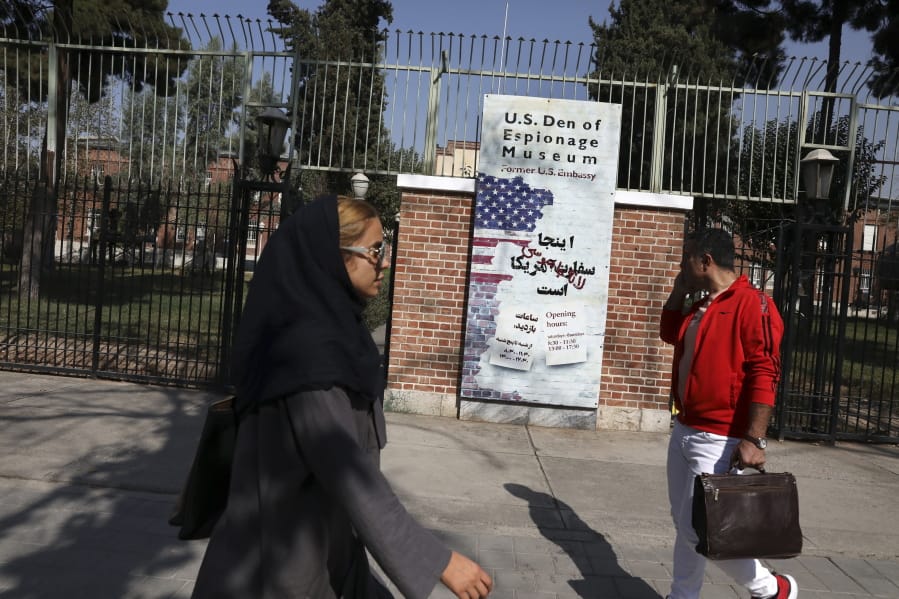TEHRAN, Iran — For those who were there, the memories are still fresh, 40 years after one of the defining events of Iran’s 1979 Islamic Revolution, when protesters seized the U.S. Embassy in Tehran and set off a 444-day hostage crisis.
The consequences of that crisis reverberate to this day.
Veteran Iranian photographer Kaveh Kazemi recalled snapping away with his camera as he stood behind the gate where the Iranian militant students would usher blindfolded American hostages to those gathered outside waving anti-American banners and calling for the extradition of the deposed Shah Mohammad Reza Pahlavi.
“Sometimes they would bring a U.S. flag and burn it, put it in flames and then throw it among the crowd,” said Kazemi, now 67, pointing to the spot. “They would come and chant ‘death to America,’ ‘death to the shah’ … it changed the world as I knew it.”
Anger toward America had already been growing throughout 1979 as Iran’s revolutionary government took hold, but it boiled over in October when the United States took in the ailing shah for medical treatment.
After several protests, the Islamist students raided the embassy on Nov. 4 and took 98 hostages.
What initially began as a sit-in devolved into 444 days of captivity for 52 Americans seized in the embassy. It prompted President Jimmy Carter to expel Iranian diplomats and launch a failed rescue mission before the Americans were eventually released on the last day of his presidency, setting off decades of hostility amid an Islamic takeover that turned the country from a former U.S. ally into perhaps its greatest adversary.
Many of those sentiments remain today amid the escalating tensions between Tehran and Washington, following the disintegration of Iran’s 2015 nuclear deal and the subsequent U.S. sanctions that have sent the Iranian economy into free fall.
Outside the former embassy’s shaded red brick walls, which were in the process of being painted with anti-U.S. murals for the upcoming anniversary, former protester Hossein Kouhi said he turned out in 1979 to denounce what he called U.S. intervention in Iran’s internal affairs, something he says continues today.
“I had a good feeling then, but we have had a bad fate,” said Kouhi, now 76, as he blamed the U.S for shortages of medicines in Iran because of the sanctions. “Even today, if we allow, it (the U.S.) will come here to plunder Iran, just like it’s doing to other countries in the region. No foreigner is a friend of Iran. They all lie.”
Zahra Tashakori, a 41-year-old schoolteacher, agreed, saying she was glad the American presence was long gone.
“Look at their movies. They promote violence and other bad things in the societies,” she said. “They ruined wherever they intervened in the region. Just look at Iraq, Afghanistan and Syria.”
Iran’s Supreme Leader Ayatollah Ali Khamenei, like his predecessor Ayatollah Ruhollah Khomeini, repeatedly hails the militants who took over the embassy as being “ahead of their time.”
Others on the street, though, had a more nuanced view in hindsight.
“I believed the U.S. Embassy should have been closed down officially, but not through takeover,” said Ghasem Rabiei, 49.




